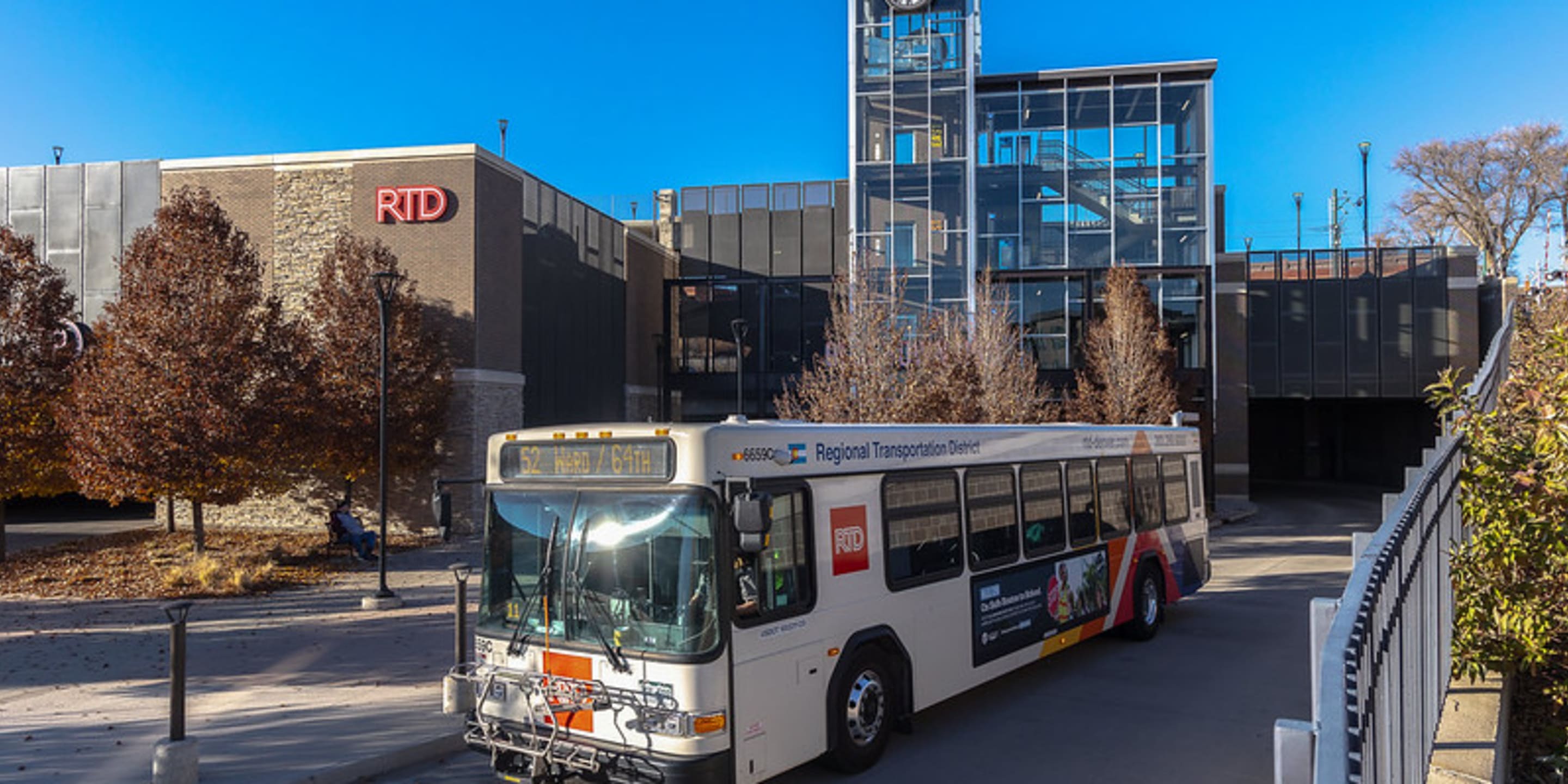
RTD balances reliability and emissions reductions through fleet investment
RTD is taking another step in its long-term Facilities and Fleet Transition Plan by investing $539 million over the next five years to replace aging diesel buses with more efficient, clean-diesel buses. The move ensures RTD can continue delivering safe and reliable transit services while positioning the agency for a gradual shift to low- and zero-emission vehicles.
How old are the diesel buses RTD plans to replace?
RTD currently operates a fleet of 955 buses that serve communities across the Denver metro region. Most of the vehicles scheduled for replacement are approximately 14 years old and/or have reached 500,000 miles. This aligns with the agency’s standard lifecycle for vehicles and is consistent with Federal Transit Administration guidelines. By replacing vehicles at this interval, the agency can manage maintenance costs more effectively and reduce service interruptions for customers.
Why isn't RTD transitioning directly to a zero-emission fleet?
RTD remains committed to acquiring low- and zero-emission vehicles as funding, fleet replacement schedules and market availability allow.
This approach reflects current conditions in the bus manufacturing market and federal procurement standards. New Flyer Industries, the sole U.S. manufacturer of 60-foot articulated hybrid-electric buses, recently discontinued production of those models, leaving clean diesel as the only available, federally compliant option for high-capacity corridors such as the East Colfax Bus Rapid Transit project.
Alternatively, if RTD were to purchase 60-foot hybrid buses from manufacturers outside the U.S., the vehicles would be subject to tariffs and would likely rely entirely on local funding. This does not preclude RTD from acquiring smaller, 35- and 40-foot hybrid-electric buses in the future.
Why can't RTD use federal funds or grants for low-zero emission vehicles?
To support vehicle purchases, RTD pursues federal funding when feasible. Federal Transit Administration (FTA) Section 5307 formula grants are commonly used for replacement and expansion vehicles. These annual, noncompetitive funds support multiple capital needs but do not fully cover RTD’s vehicle procurements or maintenance requirements. Most uses of Section 5307 funds also require a local funding match.
In the case of the East Colfax Bus Rapid Transit Project, federal support was not contingent on using hybrid or electric buses, and vehicle specifications were not part of the federal project scope. The corridor will operate with clean-diesel buses.
RTD will continue procuring clean-diesel vehicles until lower-emission options become more readily available, as factors such as tariffs, supply chain constraints and federal Buy America requirements continue to limit access to electric and hybrid models. In the meantime, revenue vehicles must be replaced based on their condition and service life. That process cannot be postponed when zero- or low-emission alternatives are impracticable.
How will new clean-diesel buses improve air quality?
The new clean-diesel buses will use ultra-low-sulfur fuel and advanced emissions-control technology that meet the latest U.S. Environmental Protection Agency standards, significantly reducing pollutants compared with older engines.
On average across RTD’s system, each bus carries customers who would otherwise travel more than seven vehicle miles for every mile the bus operates, further reducing emissions and roadway congestion. This ensures cleaner operation while RTD continues work toward the next phase of its transition plan, which includes expanded charging infrastructure, facility upgrades, and workforce training to support future electric bus operations.
When will RTD complete its transition to electric vehicles?
RTD's Facilities and Fleet Transition Plan outlines near- and long-term strategies to modernize its fleet and facilities.
The near-term plan (2025–2035) includes upgrades such as bus garages and EV chargers to support a battery-electric bus fleet at the Platte Division and the transition from diesel to diesel-hybrid electric buses. Implementation will depend on available funding and Board approval.
The long-term strategy (2036–2050) aims for a complete shift to zero-emission buses, contingent on technological advancements in battery-electric and hydrogen fuel cell buses.
What is RTD doing now to promote environmental sustainability?
While the near-term investment focuses on replacing end-of-life vehicles, RTD remains committed to sustainable operations and continues pursuing federal funding opportunities to support future electric fleet expansion. The agency’s 16th Street FreeRide service already uses a fully electric fleet, providing a model for broader adoption as facilities and funding evolve.
RTD’s bus fleet incorporates a range of clean-air technologies designed to reduce emissions and improve efficiency. The agency operates on ultra-low-sulfur diesel fuel, which contains 95% less sulfur than conventional diesel and continues to phase out older, high-emission vehicles in favor of near-zero-emission models.
Additionally, RTD partners with the National Renewable Energy Laboratory at its ReFUEL research facility to test new propulsion systems and fuels. These efforts reflect RTD’s long-standing leadership in advancing cleaner transportation across the Denver region.
More information about these clean-air programs is available under the Reports and Policies section of rtd-denver.com.
Transitioning a transit system of RTD's fleet size by 2050 requires meticulous planning across multiple areas, from facilities and power supply to employee training and funding. This strategy ensures that RTD not only advances towards a sustainable, zero-emission future, but also maintains reliable service throughout the transition and positions the agency for long-term environmental success.